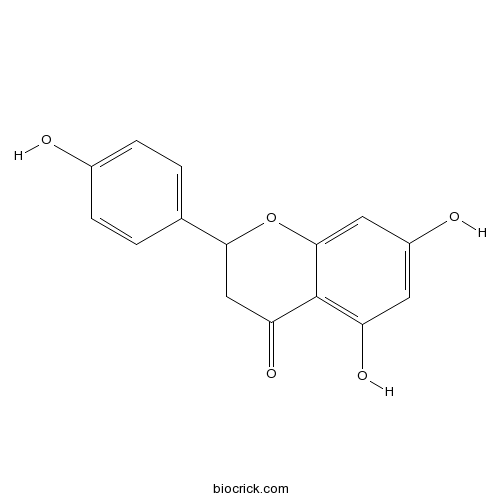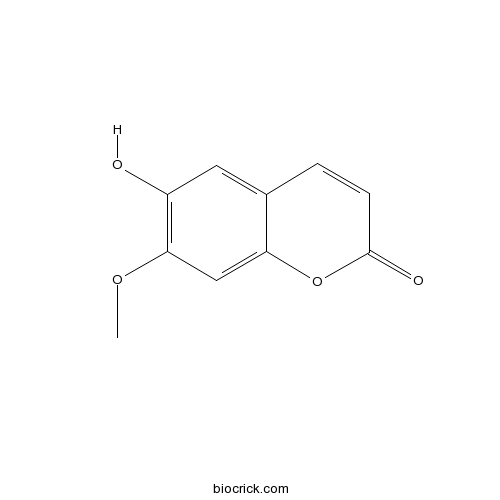Ulmus pumila
Ulmus pumila
1. The products in our compound library are selected from thousands of unique natural products; 2. It has the characteristics of diverse structure, diverse sources and wide coverage of activities; 3. Provide information on the activity of products from major journals, patents and research reports around the world, providing theoretical direction and research basis for further research and screening; 4. Free combination according to the type, source, target and disease of natural product; 5. The compound powder is placed in a covered tube and then discharged into a 10 x 10 cryostat; 6. Transport in ice pack or dry ice pack. Please store it at -20 °C as soon as possible after receiving the product, and use it as soon as possible after opening.
Natural products/compounds from Ulmus pumila
- Cat.No. Product Name CAS Number COA
-
BCN9061
(±)-Naringenin67604-48-2
Instructions

-
BCN4582
Isoscopoletin776-86-3
Instructions

Fatal Attraction: Ricinus communis Provides an Attractive but Risky Mating Site for Holotrichia parallela Beetles.[Pubmed: 30116996]
The castor bean, Ricinus communis L., is a non-host plant for the large black chafer, Holotrichia parallela Motschulsky (Coleoptera: Scarabaeidae). In laboratory bioassays we found that this plant was no less attractive than the main host plant (peanut, Arachis hypogaea) and three food plant species: velvetleaf (Abutilon theophrasti), the glossy privet (Ligustrum lucidum), and the Siberian elm (Ulmus pumila). In field trapping experiments a Soxhlet extract of castor bean leaves caught more beetles than the optimal sex lure blend [(R)-(-)-linalool and (L)-isoleucine methyl ester blended in a ratio of 1:4], compared at equal doses (500 μl), and laboratory bioassays indicated that a castor bean plant could enhance the attractiveness of different blend ratios of sex lures. Olfactometer bioassays showed that males prefer volatiles emitted from different combinations of castor bean plant extracts and a signaling female over a female alone. In the presence of castor bean plants copulation rates of H. parallela were highest among all test environments both in laboratory bioassays (60%) and in field tests (70%). This study, combined with our previous observation of the feeding behavior of H. parallela adults on castor bean leaves, suggests that castor bean plants may provide an attractive but risky mating site for H. parallela beetles. The enhancement of male mate-location and copulation rate in the presence of castor bean plants can balance its paralytic effects on H. parallela after intake of potential toxins contained in its leaves.
[Effects of drought stress on C, N and P stoichiometry of Ulmus pumila seedlings in Horqin sandy land, China.][Pubmed: 30039667]
设置适宜水分、轻度、中度和重度干旱胁迫处理(即80%、65%、50%和35%田间持水量),研究干旱胁迫对榆树幼苗不同器官C、N、P化学计量的影响.结果表明:与适宜水分处理相比,干旱胁迫导致C含量在叶、茎、粗根和细根中增加,N含量在叶、茎和粗根中增加,P含量在叶、茎和粗根中下降,在细根中增加,C:N在叶和茎中下降,C:P及N:P在叶、茎和粗根中增加,在细根中下降.各器官间C含量呈显著正相关,而各器官间N与P相关性均不显著.土壤含水量与各器官C含量,叶N含量,细根P含量及C:N,叶、茎和粗根C:P及N:P呈显著负相关,而与细根N含量,叶、茎和粗根P含量,细根C:P及N:P呈显著正相关.因此,干旱胁迫影响榆树幼苗对N、P的吸收及向上运输,幼苗生长主要受N限制;随着干旱胁迫的加剧,叶、茎和粗根生长受P限制作用增强.
Discovery of Ulmaceae-feeding Tischeriidae (Lepidoptera, Tischerioidea), Tischeria ulmella sp. nov., and the first report of the Quercus-feeding T. naraensis Sato in China.[Pubmed: 29690319]
We provide the first report of Tischeriidae on Ulmaceae, a novel host-plant family, and describe Tischeria ulmella Xu Dai, sp. nov., a new species discovered in the Yellow River Scenic Area of Zhengzhou (Henan Province, China), feeding on Ulmus pumila L. We also provide a redescription of the Quercus-feeding Tischeria naraensis Sato discovered in China for the first time. Both species are illustrated with photographs of the adults, male and female genitalia, and the leaf mines.
Tetraneura ulmi (Hemiptera: Eriosomatinae) Induces Oxidative Stress and Alters Antioxidant Enzyme Activities in Elm Leaves.[Pubmed: 29672728]
Gall formation is induced by an insect, which changes normal plant development and results in the formation of a new organ, following distinct stages of metabolic and developmental alterations. Research on mechanisms of recognition and responses to biotic stress may help to understand the interactions between galling aphids and their host plants. In this study, Tetraneura ulmi L. (Hemiptera: Eriosomatinae) galls and Ulmus pumila L. (Rosales: Ulmaceae) leaves were used as a model. Concentrations of hydrogen peroxide (H2O2) and thiobarbituric acid reactive substances, electrolyte leakage, as well as the activity of ascorbate peroxidase, guaiacol peroxidase, and catalase (CAT) were determined in galls and two parts of galled leaves (with and without visible damage). Biochemical analyses were performed at three stages of gall development: initial, fully developed, and mature galls. A slight increment in H2O2 content with a strong enhancement of ascorbate peroxidase and CAT activities were observed in galls and galled leaves in the first stage. In subsequent stages of gall development, a progressing increase in H2O2 production and cell membrane damage was associated with declining antioxidant enzyme activities, especially in gall tissues. The stages of gall development are likely to be part of cell death triggered by aphid feeding. It seems that the gall is the result of a biochemical struggle between the host plant and the gall inducer.
The characterization, selenylation and anti-inflammatory activity of pectic polysaccharides extracted from Ulmus pumila L.[Pubmed: 29309871]
The specific objective of this study was to investigate characterization, selenylation, and anti-inflammatory activities of pectic polysaccharides extracted from Ulmus pumila L. (PPU). Four different monosaccharides were found in PPU, including galacturonic acid, galactose, rhamnose, and glucose. FT-IR spectra indicated that pectic polysaccharides were successfully extracted from Ulmus pumila L., and were probably low methoxyl pectin. GC-MS and NMR analysis of PPU suggested the major monosaccharide of PPU was α-1,4-linked galacturonic acid with α-1,2-linked rhamnose as the backbone and glucose or galactose residues as branches at C-3 and C-4 positions of rhamnose. Selenylation of PPU was synthesized by 0.2 and 0.4% of sodium selenites. Selenized-PPU (Se-PPU) inhibited LPS-induced nitric oxide production in RAW 264.7 cells, and increasing selenium content enhanced anti-inflammatory properties of PPU. Therefore, Se-PPU can be used as a potential source of bioactive compounds for nutraceuticals and pharmaceutical applications.
Effects of selenylation modification on structural and antioxidant properties of pectic polysaccharides extracted from Ulmus pumila L.[Pubmed: 28673847]
None
Review of the Palearctic Atemelia Herrich-Schäffer (Lepidoptera, Yponomeutoidea, Praydidae), with description of a new leafmining species.[Pubmed: 28610009]
The Palearctic Atemelia Herrich-Schäffer, 1853 is reviewed. Two species are treated, one of which is described as new: A. fusca Liu, sp. nov. The genus Atemelia is recorded in China for the first time, and it is also newly recorded from the Eastern Palearctic region. Larvae of A. fusca sp. nov. mine leaves of Ulmus pumila (Ulmaceae), sharing the same host plant genus with another leaf miner A. torquatella (Lienig & Zeller, 1846) from Europe, but they are distinctive from the Nearctic and the Neotropical Atemelia species in host plant families and life styles. Photographs of adults and genitalia of the Palearctic Atemelia are provided. Additional photographs of immature stages, leafmines, and host plant are provided for the new species. In addition, three DNA barcodes are provided for A. fusca sp. nov.
Biological traits and the complex of parasitoids of the elm pest Orchestes steppensis (Coleoptera: Curculionidae) in Xinjiang, China.[Pubmed: 28578717]
The flee-weevil Orchestes steppensis Korotyaev (Coleoptera: Curculionidae) is a steppe eastern Palaearctic species, notable as a serious pest of elms (Ulmus spp., Ulmaceae), by feeding on the leaves (adults) or mining them heavily (larvae), especially of Ulmus pumila L. in Xinjiang, China. We have corrected the previous misidentifications of this weevil in China as O. alni (L.) or O. mutabilis Boheman and demonstrated that it is likely to be an invasive species in Xinjiang. Prior to this study, natural enemies of O. steppensis were unknown in Xinjiang. Resulting from field investigation and rearing in the laboratory during 2013-2016, seven parasitoid species were found to be primary and solitary, attacking larval and pupal stages of the host weevil. Pteromalus sp. 2 is the dominant species and also is the most competitive among the seven parasitoids, which could considered to be a perspective biological control agent of O. steppensis. Yet, the current control of this pest by the local natural enemies in Xinjiang is still currently inefficient, even though in 2016 parasitism was about 36% on U. pumila in Urumqi, so the potential for a classical biological control program against it needs to be further investigated, including an assessment of its parasitoids and other natural enemies in the native range of O. steppensis. The presented information on the natural enemies of this weevil can be also important for a potential classical biological control program against it in North America (Canada and USA), where it is a highly damaging and rapidly spreading invasive species.


